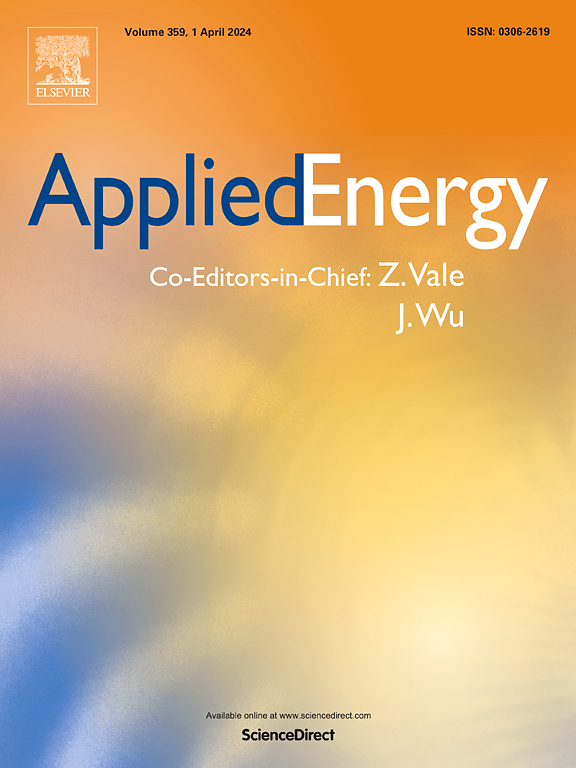Investigating viability of low temperature co-sintering to produce Ni-YSZ supported solid oxide electrolysis cells with a Ni-GDC active layer
IF 11
1区 工程技术
Q1 ENERGY & FUELS
引用次数: 0
Abstract
Solid oxide cells (SOC) are attractive for large scale electrolysis because of their unmatched efficiency. The current performance limitation for fuel electrode supported cells, is the Ni-YSZ fuel electrode, which suffers critical degradation at high current density. This limits their hydrogen production capacity. Aiming to overcome said limitation, this work demonstrates the integration of Ni-GDC (Ce0.9Gd0.1O1.95) fuel electrodes into co-sintered thin electrolyte cells. Ni-GDC is widely used in electrolyte supported cells without signs of similar degradation. The novelty of the manufacturing approach adopted was to reduce the co-sintering temperature to 1250 C to limit detrimental interdiffusion between GDC and the zirconia-based electrolyte. It was possible to make testable and gas-tight cells at 1250 C, and the temperature reduction was effective at reducing interdiffusion. However, microstructural characterization of the realized cells documented poor contact between GDC in the fuel electrode and the ScYSZ electrolyte (Sc2O3-Y2O3 stabilized ZrO2). This was the main cause for an approximate 50 pct drop in electrochemical performance compared to cells with Ni-YSZ electrodes. Despite the poor performance, the long-term stability was found to be improved relative to Ni-YSZ fuel electrode cells. One test operating between −1 and −1.75 A/cm2 for more than 500 h showed no Ni migration. Moreover, it was found that this cell layout did not suffer mechanical failure despite large chemical expansions of GDC. If future work can solve the electrode-electrolyte contact issue, the reported cell concept has the potential to enable a significant increase in the area specific hydrogen production capacity of SOCs.
研究低温共烧结制备Ni-YSZ负载的Ni-GDC活性层固体氧化物电解电池的可行性
固体氧化物电池(SOC)由于其无与伦比的效率,在大规模电解中具有很大的吸引力。目前燃料电极支撑电池的性能限制是Ni-YSZ燃料电极,它在高电流密度下会严重退化。这限制了它们的氢气生产能力。为了克服上述限制,本研究展示了将Ni-GDC (Ce0.9Gd0.1O1.95)燃料电极集成到共烧结薄电解质电池中。Ni-GDC广泛用于电解质支持的电池,没有类似降解的迹象。该制造方法的新颖之处在于将共烧结温度降至1250°C,以限制GDC和锆基电解质之间有害的相互扩散。在1250°C时可以制造出可测试的气密电池,而且降低温度可以有效地减少相互扩散。然而,实现电池的微观结构表征表明,燃料电极中的GDC与ScYSZ电解质(Sc2O3-Y2O3稳定的ZrO2)之间的接触不良。这是与镍- ysz电极电池相比,电化学性能下降约50%的主要原因。尽管性能较差,但相对于Ni-YSZ燃料电极电池,其长期稳定性得到了改善。在−1和−1.75 A/cm2之间运行超过500 h的测试显示没有Ni迁移。此外,我们还发现,尽管GDC的化学膨胀很大,但这种电池布局不会发生机械失效。如果未来的工作能够解决电极-电解质接触问题,报道的电池概念有可能显著提高soc的区域特定制氢能力。
本文章由计算机程序翻译,如有差异,请以英文原文为准。
求助全文
约1分钟内获得全文
求助全文
来源期刊

Applied Energy
工程技术-工程:化工
CiteScore
21.20
自引率
10.70%
发文量
1830
审稿时长
41 days
期刊介绍:
Applied Energy serves as a platform for sharing innovations, research, development, and demonstrations in energy conversion, conservation, and sustainable energy systems. The journal covers topics such as optimal energy resource use, environmental pollutant mitigation, and energy process analysis. It welcomes original papers, review articles, technical notes, and letters to the editor. Authors are encouraged to submit manuscripts that bridge the gap between research, development, and implementation. The journal addresses a wide spectrum of topics, including fossil and renewable energy technologies, energy economics, and environmental impacts. Applied Energy also explores modeling and forecasting, conservation strategies, and the social and economic implications of energy policies, including climate change mitigation. It is complemented by the open-access journal Advances in Applied Energy.
 求助内容:
求助内容: 应助结果提醒方式:
应助结果提醒方式:


